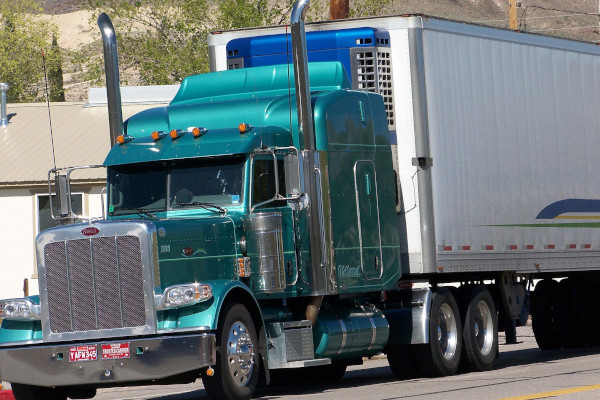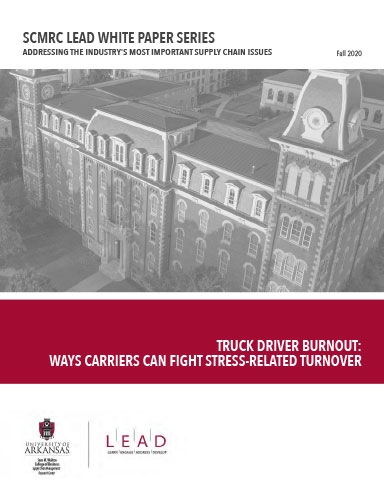Supply Chain Dilemmas with Trucking Vehicle and Labor Shortages
Rigidities in the supply of truck drivers and truck availability have a lot in common with Greek tragedies.
Market or Roadway Mayhem? A Fundamental Supply Chain Dilemma
The boom-and-bust market dynamics of the trucking industry can have the feel of a Greek tragedy—everyone can see the inevitable ending, but no one is free to take a different path that avoids the fall. Worse yet, the end restarts the cycle.
When shippers demand more capacity, market prices skyrocket. Carriers, taking the new demand as permanent, buy new trucks and add drivers. Demand inevitably softens and the bottom falls out of prices, similar to what is happening now. According to the CASS Truckload Price Index, prices have tumbled 15% from a year ago.
This cycle doesn’t quite compare to the story of Prometheus, the mythical god whose punishment for gifting humans with fire was to have his liver eaten, regenerated, and eaten again every day for eternity in the depths of Hades. Nonetheless, the trucking industry can feel similarly bound to repeat its market-driven sequence.
Furthermore, a fundamental tradeoff between safety and capacity adds another subplot to the trucking tragedy. Indeed, a growing body of supply chain research indicates that safety regulations limit the fluid entry and exit of drivers required for prices to stabilize.
The trucking industry is strongly procyclical, meaning it is closely tied to overall economic performance. As consumers spend, the need for transport increases. There’s a multiplier effect with this spending, too, because each dollar of final consumption spending involves multiple moves for products within the supply chain.
When a consumer buys a new refrigerator, for example, a last-mile delivery brings it to their house; another truck restocks the distribution center from the manufacturer (or port), while additional transportation is needed to deliver parts to the manufacturer, and so on. The motor carrier industry (and the rest of the transportation sector) thus needs to be nimble because small spending changes translate into large differences in transportation needs by shippers. Yet, the industry is constrained in its ability to rapidly change capacity.
The first constraint is technological. Most industries increase output by adjusting labor or capital. They can hire more workers and run their machines longer, or they can buy more or better machines and equipment to improve productivity with their existing labor pool.
Not so with trucking. Labor has to be paired with equipment in a comparatively rigid way—successful transportation of a product requires a driver and a truck in fixed proportion. Thus, a shortage of drivers or trucks can result in delays. There’s no fudge factor or flexibility in the mix.
The second bottleneck is that getting products where they need to go often puts drivers and equipment out of position for their next move. More trucks are needed to haul goods to Florida, for instance, than to haul products from Florida to other states. This is a headache most other industries simply don’t have. Workers show up to the same place every day, and the process of doing the job doesn’t make it more difficult to be there on time the next day.
Safety regulation constraints
Safety regulations exacerbate the technological constraints that create challenges for adding capacity. We are not advocating for the removal of safety regulations—at least not all of them—but merely pointing out the costs they impose.
Most industries can increase output by simply asking workers to put in more hours. This is not possible with trucking. While drivers are strangely exempt from overtime pay regulations, their work hours are rigidly restricted. Under hours-of-service regulations, for example, a driver cannot legally drive more than 11 hours per day.
These constraints have been more rigorously enforced with the mandatory use of electronic logging devices (ELDs). These were effective in improving safety performance when voluntarily adopted by large carriers prior to regulation; however, since becoming mandatory, ELDs have had the effect of reducing capacity and increasing spot market rates without measurably improving safety.
The only way to increase capacity, then, is to hire more drivers, either at established firms or newly created ones. Yet, there are more regulatory barriers. A commercial driver’s license for operating heavy trucks requires around two months of full-time training, and two months is a rather long time for shippers to wait for a delivery. Starting a business requires even longer.
There is a reserve of truckers hidden in other industries, notably in construction, but wages (and prices) have to increase considerably to entice them to change occupations. Historically, motor carriers have struggled to raise wages at the pace necessary to secure new workers—or they are loathe to do so.
Trucking employment also has some notable additional restrictions. For instance, drivers are subject to drug screening, disqualifying thousands of candidates. Another example is the requirement that interstate truck drivers be at least 21 years old. These regulations may result in safer roads, but they limit the potential driver pool and, thus, capacity.
Putting it all together
Combining volatile demand with limited capacity to change supply yields the current price dynamics. So, how can shippers, carriers, and policymakers influence these market realities to create greater stability?
Fundamentally, the problem stems from rigidities in supply. Is it possible for safety regulations to be effective but not so rigid? One interesting option is mandatory overtime pay. Drivers do not suddenly become more dangerous upon hitting the 11-hour mark; rather, fatigue builds continuously from the start of the day. Overtime pay discourages employers from using long hours well before the 11-hour limit. Hourly pay would also encourage carriers and shippers to add capacity by reducing detention times. Finally, it reduces the temptation to speed.
A further-reaching option is removing the driver altogether. Fully automated vehicles eliminate the rigidities of having to pair workers with equipment. More obviously, machines do not tire, which adds capacity by increasing utilization rates. Automated vehicles would add much more flexible supply, smoothing market volatility while annihilating entire occupations, including truck safety research.
Interestingly, some scholars believe Prometheus Bound, the ancient-Greek tragedy typically attributed to Aeschylus, may have been followed by a second play, Prometheus Lyomenos (Prometheus Unbound), and perhaps even a third, Prometheus Pyrphoros (Prometheus the Fire-Bearer). The fragments of these plays indicate a reconciliation between Zeus and Prometheus, so perhaps there’s hope for a happy ending to the trucking industry’s saga, as well.
About the authors:
Andrew Balthrop (PhD Georgia State University) is a research associate within the Supply Chain Management Research Center at the Sam M. Walton College of Business at the University of Arkansas. His research focuses on the interaction between supply chains and public policy.
Jonathan Phares (PhD, University of Arkansas) is an Assistant Professor of Supply Chain Management at Iowa State University’s Debbie and Jerry Ivy College of Business. He studied policy and market dynamics in transportation and healthcare operations. His research has been published in the Journal of Business Logistics and Business Horizons. Prior to joining academia, he spent over a decade in operational and strategic supply chain management leadership roles for a large retailer.
Article Topics
University of Arkansas News & Resources
Supply Chain Set to Deliver this Christmas Replacing Just-in-Time and Just-in-Case with Agile Inventory Management Robots Can Improve the Pharmacy Business and Patient Safety 5 Ways Supply Chain Managers Can Contribute to Humanitarian Relief An Early Delivery for Christmas: A Healthy Supply Chain Supply Chain Lesson for Transitioning from Fossil Fuels Supply Chain Dilemmas with Trucking Vehicle and Labor Shortages More University of ArkansasLatest in Business
A Look at Baltimore’s Key Bridge Collapse—One Month Later European Parliament Passes New Law Requiring Supply Chain Accountability Baltimore Continues Bridge Recovery With Opening of New Channel How Shippers Can Prep for Hurricane Season Apple Accused of Multiple Human Rights Violations South Korea Finally Overtakes China in Goods Exported to U.S. UPS Struggles in First Quarter With Steep Earnings Decline More Business














